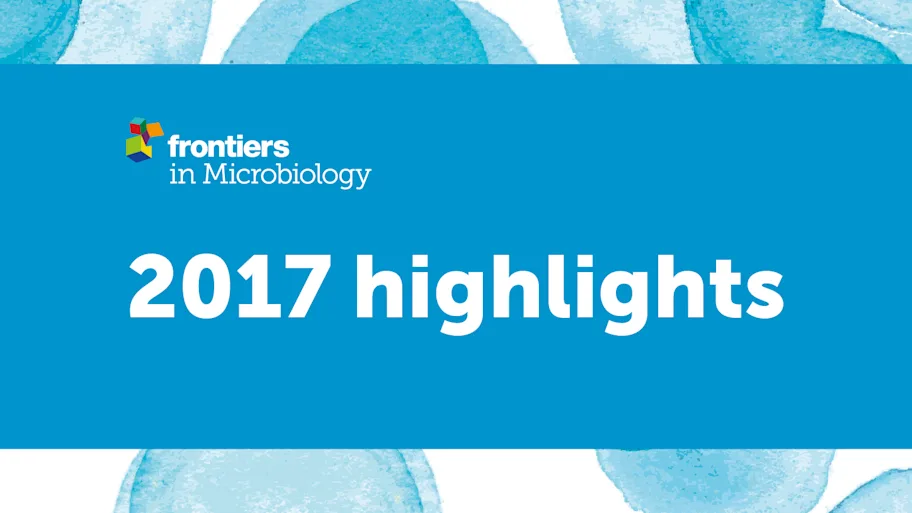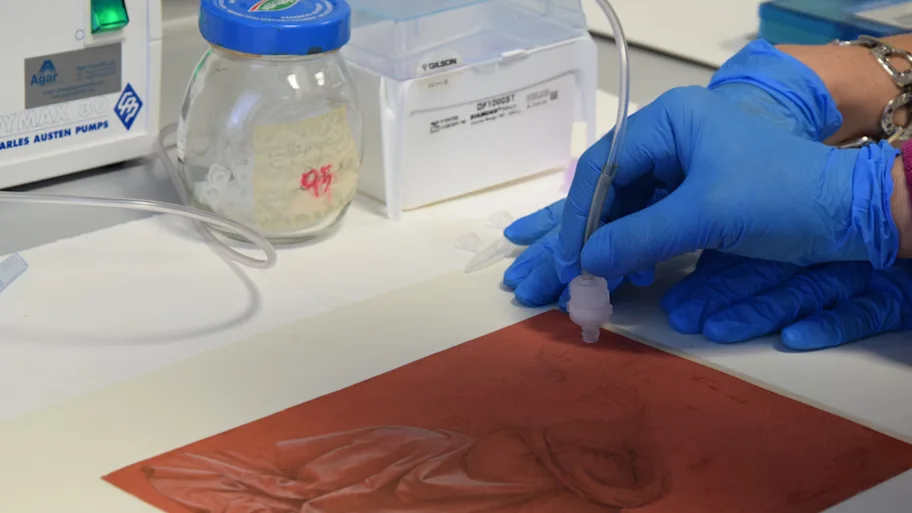
- Science News
- Life sciences
- The microbiome: our invisible partner
The microbiome: our invisible partner
This Research Topic, published in Frontiers in Microbiology, provides a home for studies exploring how the microbiome and host organisms interact.
— By Conn Hastings
When we look in the mirror we see what appears to be a discrete organism. We look at plants and animals and see them as unique and individual players in the planet’s ecosystem. But there is a silent and invisible partner that immerses these organisms, and our biology is intertwined. It was present on Earth before us and will likely survive us. Complex life forms have evolved in tandem with it, and it has shaped our evolution as a synergistic companion. It constantly interacts with us and pervades almost every conceivable habitat on our planet, including our bodies. And for the most part, it is our ally. It is microbial life.
Have you ever thought about the number of microbes, including bacteria and fungi, in the human body? The microbial cells in your body number in the trillions, and have been estimated to rival the number of human cells. Are these microbes merely separate organisms hitching a ride on your skin or in your gut, or are they an intrinsic part of you? They have been with you from the start of your life. You probably received your first microbes in your mother’s womb during your birth, and if you were breast fed, through her breast milk. For the rest of your life there is a constant stream of microbes entering and leaving your body, providing a sustained biological connection between you and the rest of the world.
The bustling community of microbes in and on us is called our microbiome. It is only recently that scientists have realized that the huge diversity of microbes in and on humans, plants and animals is a significant factor in health and disease, and in ecology and agriculture. The Frontiers Research Topic, “Microbiome interplay and control”, consists of a collection of scientific articles exploring the interaction between host organisms and the microbiome, and how the microbiome can be influenced and controlled.
“Microbiome research has shaken our view of ourselves, and the environment,” says Topic Editor Martin Grube of the University of Graz. So why has it taken us this long to appreciate that microbes are a huge part of our biology and that of the world around us? Well, until relatively recently we viewed “germs” largely as disease-causing nasties to be eradicated using disinfectants or antibiotics. However, the overwhelming majority of microbes do not cause disease and many are actually beneficial to our health. Overusing or misusing disinfectants and antibiotics kills both disease-causing and beneficial microbes, reducing microbial diversity.
Participate in next year’s Spotlight Award: Submit your Research Topic idea
“Organisms evolved to be naturally immersed in a variety of microbes. Without this diversity, we could be easy prey for disease-causing microbes, who could colonize us more effectively without competition from harmless microbes,” says Grube. Our microbiome can have significant and far-reaching effects on our health and happiness, both good and bad. “Microbes help us to digest food, train our immune system, trigger bioactive substances, influence emotions and brain activity, and even defend us from pathogens,” explains Topic Editor, Christine Moissl-Eichinger, of the Medical University of Graz. In fact, the microbiome is so intrinsic to how our bodies function, that it can be thought of as an invisible organ.
However, the microbiome isn’t unique to humans. Given that plants and animals also possess an elaborate microbiome, microbes are important in ecology and agriculture. “Environmental microbiome research has provided spectacular insights into the importance of microbial symbioses for plant productivity. The microbiome is a significant factor in food safety and quality,” says Topic Editor, Gabriele Berg, of the Graz University of Technology.
This Research Topic provides a home for studies exploring how the microbiome and host organisms interact. Many of these interactions can affect human health, sometimes in surprising ways, and this is covered in several articles in the Research Topic. While most of the human microbiome is present in the gut, these microbes can have significant effects on other sites in the body. For example, a review discusses the importance of microbial diversity in the gut in maintaining lung health, where reduced gut diversity has been linked to lung immune responses and conditions such as allergies and asthma. Similarly, another article discusses how bacteria in the gut can release substances that cause inflammation in the brain, and may be linked to inflammatory neurodegenerative diseases, such as Alzheimer’s disease.
Of course, microbes in the gut can affect the gut itself. A review discusses how poor microbial diversity in the gut is linked with enterocolitis and short bowel syndrome in newborns. The microbiome could also be useful for diagnosing diseases. For example, a small pilot study showed that microbes present in saliva may be different in people suffering from polycystic ovary syndrome, potentially providing a non-invasive way to diagnose the condition.
If the microbiome is so important, how can it be controlled or altered? Several publications in the Research Topic deal with just that. An opinion article discusses strategies to control the microbiome in humans, animals and plants, including encouraging beneficial bacteria to grow by creating a more welcoming environment in the soil or the gut. This includes using prebiotics in the gut and reducing chemical pesticides while increasing the amount of natural composts in the soil.
Microbes present in the environment surrounding an organism can affect its microbiome, and vice versa. In one study, scientists placed oysters at two marine sites for an extended period, and found that their microbiomes became significantly different, depending on their location. In another study, spider plants were shown to significantly change the microbiome of a clean indoor environment within 6 months. The gut microbiome can also be changed by simply changing the food we eat. For example, researchers significantly altered the gut microbiome in calves by changing their diet.
The Research Topic also looks at heavily disinfected environments created by humans, in which microbes aren’t welcome. To avoid contaminating other planets with microbes from Earth, we manufacture spacecraft in specialised cleanrooms with strict decontamination procedures. A study examining the microbes present in these cleanrooms found that specific microbes tended to survive decontamination protocols and persisted while spacecraft were being assembled, suggesting that we need to be careful when trying to create a microbe-free environment. Similarly, a review discusses the microbes that thrive best in enclosed indoor environments which are regularly decontaminated, like the international space station, and the risks that such resistant strains might pose to exposed people.
The microbes on and in plants can also have significant effects on their health and vigour, including effects on seed germination, plant nutrition and growth and even on the plant’s immune system. One study showed that treating soil with charcoal that increased microbial diversity also enhanced soybean growth. In another study, scientists showed that it was possible to protect lettuce plants from a fungal disease called lettuce drop, by growing the lettuces with a type of bacterium. These studies demonstrate that controlling the microbiome could be a hugely powerful way to enhance agriculture in a natural way, without harmful fertilisers or pesticides.
Collectively, this Research Topic shows that microbes are an intrinsic part of all organisms and are important in a huge variety of biological processes. The more we learn about the microbiome, the more we can use it to enhance life on Earth.
Moissl-Eichinger, Berg, and Grube have been shortlisted for the Frontiers Spotlight Award, where the winners are granted US$100,000 to host their own conference themed around their Research Topic.
Take a look at the other finalists here.






